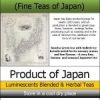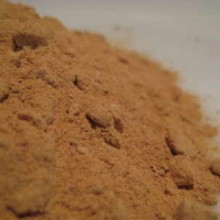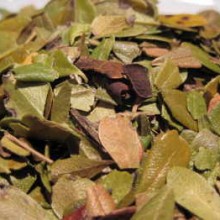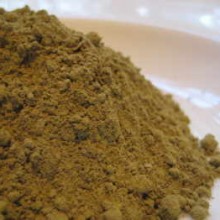Genmai Cha Loose Leaf Green Tea is a Bancha (mature leaved) green tea with added roasted and hulled rice kernels. Light brown liquor with a savoury flavour.
Japan has been producing teas for between 1000 and 1200 years, and all production is devoted to green teas. Some, however, undergo further processing such as roasting and in the case of Genmai Cha, (this tea) additions in the form of rice kernels. They are usually more expensive than teas from China
It is sometimes referred to by locals as popcorn tea because a few grains of the rice will pop during the roasting process and resemble popcorn. Today it is drunk by everyone in Japan but originally this type of tea was only drunk by poor Japanese, as the rice served as a filler and reduced the price of the tea considerably. This is also why it is known as the people’s tea. The sugar and starch from the rice cause the tea to have a warm, full flavor that is similar to that of nuts. It is considered easy to drink and helps digestion.
Tea steeped from genmaicha is a light yellow in hue. Its flavour is mild and combines the fresh grassy flavour of green tea with the aroma of the roasted rice. Although this tea is based on green tea it is only recommended that you brew this tea for around half a minute.
Green tea is ubiquitous in Japan and is commonly known just simply as “tea”
Tea was first used in China, and in 1191, was brought to Japan by Myōan Eisai, a Japanese Buddhist priest who also introduced the Rinzai school of Zen Buddhism. Teas from Japan may often be referred to as “Japanese tea” to distinguish them from their Chinese green counterparts. Of course other stories abound such as the first documented evidence of tea in Japan dating to the 9th century, when it was taken by the Buddhist monk named Eichū on his return trip to China. We will probably never know for sure but whilst Japan makes some of the finest green teas in the world and has done so for at least a thousand years – it only accounts for around 2% of the world’s export of tea.
Japanese green teas are mainly made from Yabukita which is cultivar of Camellia sinensis.
Unlike Chinese green teas which are pan-fired, Japanese green teas are steamed giving them a more “vegetative” or “leafy” taste.
Japanese green teas are categorized by the age of the leaves: young leaves are called Sencha and the mature, larger leaves are called Bancha. Types of tea are commonly graded depending on the quality and the parts of the plant used as well as how they are processed.







